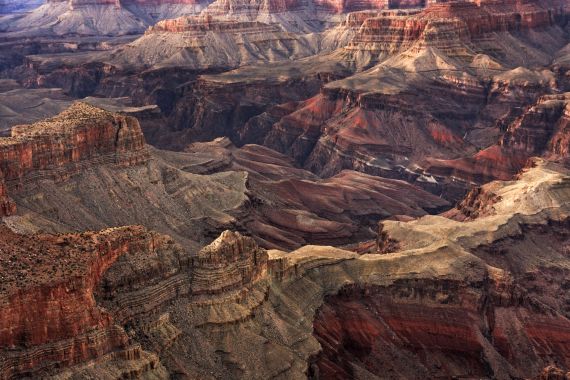Nothing captures beauty of Arizona’s landscape better than the Grand Canyon and its steeply-sided cliffs that have been carved by the Colorado River. This photo by Lukas Hoertnagl shows this stunning landscape as seen from Lipan Point in the Grand Canyon National Park.

“The Grand Canyon Symphony” by Lukas Hoertnagl. Distributed by the EGU under a Creative Commons licence.
The early geological history of America is preserved in the strata that make up the Grand Canyon’s famed banded landscape, which is composed of nearly 40 clear strata and over 100 rock units – from a 2 billion year-old metamorphic/igneous basement to the park’s dusty surface. Much of the canyon’s strata weren’t exposed until the Colorado River began to snake its way across the landscape.
After more than 150 years of study, though, Geologists are still working to understand the processes leading to the canyon’s formation. The biggest question? How the Colorado River came to take this course and start slicing the canyon cake.
The Colorado River as we know it, formed approximately 6 million years ago, following a change in the direction of many streams, which directed water towards a lower region of the Colorado Plateau. The confluence of these streams led to the formation of a large, down cutting river, which since then has sliced through over 1,800 metres of rock. The Colorado River did not have significant erosive power until it was integrated over the Great Welsh Cliffs and it while it flows from the Rockies in the East out West towards the Gulf of California today, this was not always the case.
This is where it starts to get hazy: what caused the course of the river to change? Was it rifting? Sinking of the Colorado Plateaux? A drastic change in the drainage patterns of the Colorado basin? Or was there something else contributing to the change in river flow? For now at least, the jury is out.
Imaggeo is the EGU’s online open access geosciences image repository. All geoscientists (and others) can submit their images to this repository and since it is open access, these photos can be used by scientists for their presentations or publications as well as by the press and public for educational purposes and otherwise. If you submit your images to Imaggeo, you retain full rights of use, since they are licensed and distributed by the EGU under a Creative Commons licence.

